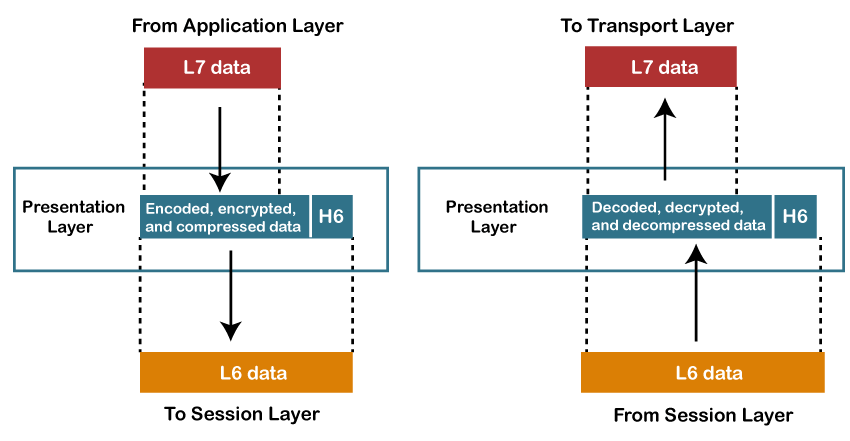
OSI: Presentation Layer - Layer 6 (Part 3)
Definition
The presentation layer is the sixth layer of the OSI model, responsible for data translation and encryption. It ensures that data is readable by the application layer and handles tasks like encryption, decryption, compression, and format translation.
Responsibilities
The presentation layer has several key responsibilities:
-
Data Translation: The presentation layer translates data between different formats, ensuring that data is readable by the application layer. This includes converting data between character sets (e.g., ASCII, Unicode), encoding schemes (e.g., Base64), and data formats (e.g., JSON, XML).
-
Encryption and Decryption: The presentation layer is responsible for encrypting and decrypting data to ensure secure communication over the network. To protect sensitive information from unauthorized access, data is encrypted before transmission and decrypted upon receipt. During this phase such protocols as SSL/TLS are used to secure the data.
-
Compression and Expansion: The presentation layer compresses and expands data to reduce bandwidth usage and improve transmission efficiency. By compressing data before transmission and expanding it upon receipt, the presentation layer can optimize network performance and reduce latency. A common example of this is the use of GZIP compression for web pages.

Protocols
The presentation layer does not have specific protocols associated with it, as its functions are typically implemented within the application layer or lower layers. However, several protocols and technologies are commonly used to perform presentation layer functions:
-
SSL (Secure Sockets Layer) is a cryptographic protocol that provides secure communication over the internet. It encrypts data transmitted between a client and server, ensuring that sensitive information remains confidential. SSL has been largely replaced by its successor, TLS (Transport Layer Security), which offers improved security and performance.
-
TLS (Transport Layer Security) is a cryptographic protocol that secures communication over the internet. TLS provides encryption, authentication, and data integrity to protect sensitive information from eavesdropping and tampering. It is widely used to secure web traffic, email communication, and other network services.
The presentation layer in the OSI model focuses on data formatting and presentation, and while there aren’t strictly defined protocols, there are various schemas and formats used to achieve this goal. Here are some common examples:
Data Compression Schemas:
- ZIP: A widely used archive format that compresses files to reduce their size for storage or transmission.
- GIF: While primarily an image format, GIF also supports a compression technique called LZW (Lempel-Ziv-Welch) to reduce file size.
- JPEG: Another image format that uses a different compression method (DCT - Discrete Cosine Transform) to achieve smaller file sizes, often at the expense of some image quality loss.
Character Encoding Schemas:
- ASCII (American Standard Code for Information Interchange): A basic character encoding scheme that assigns numerical codes to represent letters, numbers, symbols, and control characters. It ensures consistent text representation across different systems.
- Unicode: A more comprehensive character encoding standard that supports a much wider range of characters, including those from various languages and symbol sets.
- UTF-8 (UTF-8 Transformation Format): A popular encoding format based on Unicode that efficiently represents characters using a variable number of bytes.
Data Interchange Formats:
- XML (Extensible Markup Language): A flexible format for structuring and exchanging data. It uses tags to define the structure and meaning of data elements, making it machine-readable and suitable for various applications.
- JSON (JavaScript Object Notation): Another popular data interchange format that uses key-value pairs to represent data. It’s simpler than XML and often used for data exchange between web applications.
Conclusion
The presentation layer of the OSI model plays a crucial role in ensuring that data is properly formatted, encrypted, and compressed for secure and efficient communication.
That’s it for the presentation layer! In the next post, we’ll explore the Session Layer and its role in managing communication sessions between network devices. Stay tuned!